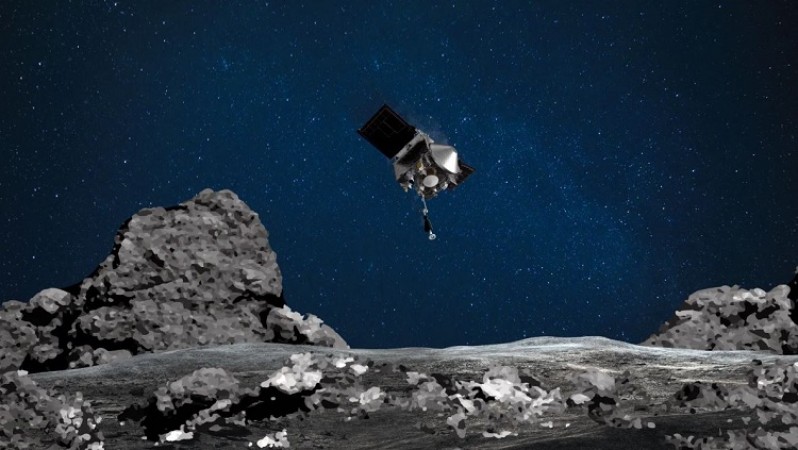
NASA Updates: In the latest updates, NASA has disclosed the contents of a sample collected from the surface of the near-Earth asteroid Bennu, a discovery that could bolster the theory that life on our planet has extraterrestrial origins. The eagerly awaited findings were unveiled to the public on Wednesday, shedding light on the sealed capsule's contents, which was returned to Earth just last month. This capsule bore material gathered from the 4.5-billion-year-old asteroid's surface by the OSIRIS-REx spacecraft.
At a press event held at the Johnson Space Center in Houston, NASA Administrator Bill Nelson expressed the significance of the find, stating, "This is the largest carbon-rich asteroid sample ever to be brought back to Earth." The first images revealed a collection of black dust and pebbles, testament to the colossal scientific endeavor.
The analysis of the sample unveiled a substantial carbon content, accounting for nearly 5 percent of the sample's total weight. Carbon was found in both organic and mineral forms. Additionally, water was identified, intricately bound within the crystalline structure of clay minerals, as described by Nelson.
These findings were made possible through a preliminary analysis employing cutting-edge techniques, including electron microscopy, X-ray computed tomography, and more. These early revelations serve as a stepping stone toward potentially uncovering more discoveries that support the hypothesis that our young Earth was seeded with the fundamental building blocks of life through celestial objects like comets, asteroids, and meteorites.
In an official statement, NASA emphasized the profound implications of these findings, stating, "The secrets held within the rocks and dust from the asteroid will be studied for decades to come, offering insights into how our solar system was formed, how the precursor materials to life may have been seeded on Earth, and what precautions need to be taken to avoid asteroid collisions with our home planet."
Eliciting great enthusiasm, senior NASA scientist Daniel Glavin remarked, "This stuff is an astrobiologist's dream," as early analyses suggest the material is "loaded with organics."
The fruits of this laborious seven-year mission, which saw the OSIRIS-REx spacecraft undertake a roundtrip journey to Bennu's surface, promise to be a game-changer in our understanding of the cosmos. After reaching Bennu in 2018 and spending nearly two years orbiting the asteroid, the spacecraft ventured close enough to collect a sample of the loose surface material using its robotic arm in October 2020.
Although attendees at the Wednesday event could only view photographs and video footage of the samples, the actual asteroid pieces are securely stored in a highly restricted laboratory at the space center, accessible only to scientists donning protective gear.
The images presented from the sample displayed a collection of charcoal-colored rocks, pebbles, and dust, which were primarily situated in the outer portion of the spacecraft's sample storage canister. Technicians are now meticulously disassembling the canister containing the bulk of the specimen, a process expected to take two more weeks.
Remarkably, an "overflow" sample was promptly examined, revealing material abundant in carbon, constituting nearly 5 percent by weight—an element crucial for all life on Earth. Furthermore, this overflow material contained water molecules intricately bound within the crystalline structure of clay fibers, as elucidated by Dante Lauretta, the principal mission investigator at the University of Arizona.